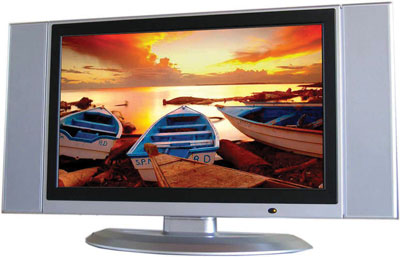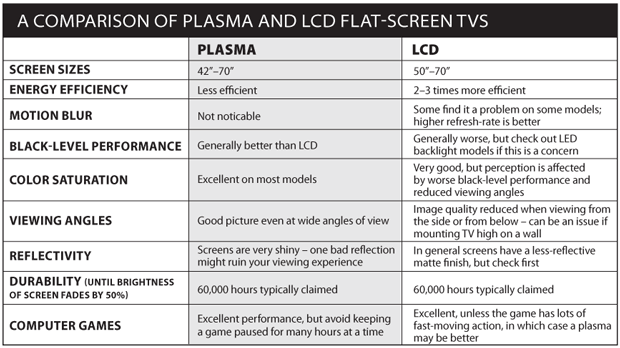
LCDs TVs are more energy efficient and less reflective that plasmas
Some 18,000 years later and just 250 miles away in the Lascaux Caves, descendants of those early artists spent even more hours in the flickering firelight painting aurochs and other wild beasts across their walls. And 15,000 years after that – all the way into the 19th century – the Native American Chumash of Southern California were still at it, producing beautiful pictographs and petroglyphs to entertain and inform themselves about astronomy, religion and the world around them.
These days we just go out and buy a 60-inch flat-screen TV and hang it on the wall.
High definition, Internet-connected, THX, HDMI, 3D televisions are everywhere, ready to bring aurochs, cave paintings, and anything else you can imagine into your sitting room at the press of a complicated remote. No flickering firelight is required, just an ability to decode the manufacturers’ advertisements, which often seem to speak another language. This is why I will try and provide a simple, cut-out-and-keep guide to buying a flat-screen TV.
THREE TYPES OF FLAT SCREENS
The first choice to focus upon is what kind of flat-screen TV you prefer. There are three basic technologies, each with their own advantages and disadvantages. First come rear-projection televisions. These aren’t “flat” in the sense that you can hang them on your wall, but they do provide large, flat screens in a box that is often only 15 inches or so deep. Rear-projection TVs are a cheaper route to large-screen satisfaction so long as you have the room for a biggish box, but many models seem to suffer from the need to replace the projector lamps fairly regularly, which can offset any initial savings. For most of us there are better options.
Plasma versus LCD is the big choice to make when choosing a television for your wall. The truth is that they are both great, offering levels of performance that were unheard of a few years ago. Today it is possible to buy a 42-inch TV for $600 that will show all the high-definition programs the cable and satellite providers offer, or just $1,200 for a 60-inch monster with twice the screen real estate, 3D capability, and the option of watching Internet channels like YouTube and Hulu.
PLASMA PREFERRED
Television enthusiasts currently prefer plasma – mostly. As recently as a couple of years ago, plasma was criticized as an older technology that suffered from short device lifespan and on-screen “burn-in” from static images like channel logos and sports game scores.
That has changed. These days plasma flat screens offer expected lifespans of around 60,000 hours, which equates to about 20 years of watching eight hours a day, the same as LCDs. And burn-in is less of a problem too, with manufacturers introducing new technologies to reduce its effect and recommendations to avoid static images for the first 100 hours of use.
The advantages plasma offers over LCD are several. Sports fans tend to like plasmas more because of their improved “refresh rate” when compared to LCDs. This means the picture is refreshed more times per second. Some find that the lower refresh rate on many LCDs leads to a blurring of high-speed motion – not great if you’re trying to watch where a golf ball is going to land or just how fast Nadal thunked that tennis ball into the slow-moving line judge.
Plasma TVs also work better if your viewing room doesn’t allow everyone to sit directly in front of the TV. The image on an LCD screen tends to fade away if you are looking at it from a side angle or from below. This is often an unforeseen problem when people mount their TVs high on a wall and find they need to tilt it downward to see the picture at all.
Additionally plasma displays the color black in greater depth, meaning that the entire picture has greater contrast and dynamic range.
LCDs ALSO POPULAR
So why do many people still choose LCDs? There are three main reasons. First, LCD screens are more energy efficient; plasmas burn two to three times as much electricity, which can add up if you watch a lot of TV. Second, LCD screens reflect less than plasma screens. This doesn’t sound like a deal-breaker at first, but it can actually be a huge deal if your viewing room has windows or bright lights behind the viewing position.
Third, some people choose LCD over plasma simply because the differences between them just aren’t that great. Both technologies offer remarkable picture quality and, at slightly higher price points, provide the ability to watch Avatar in 3D, have theater-quality sound, and connect to the Internet. You can’t really go wrong either way.

Chris Trayhorn is the founder of Revenue Performance magazine and the CEO of mThink.com. He knows a lot about online marketing and technology and a little bit about nearly everything else. E-mail: chris@northsidesf.com








